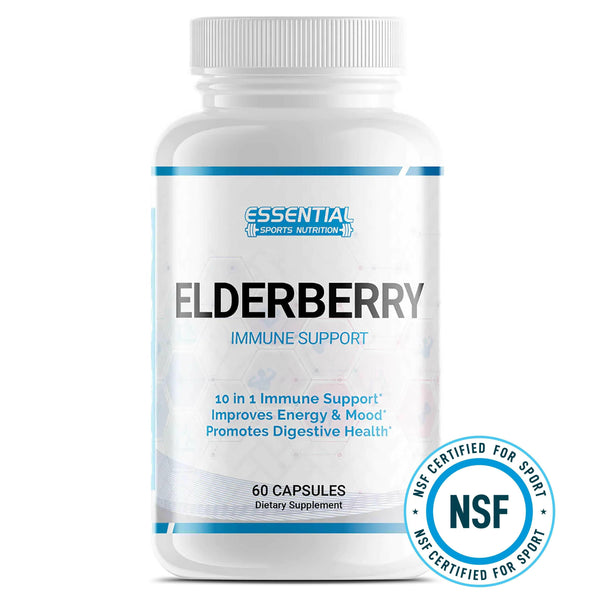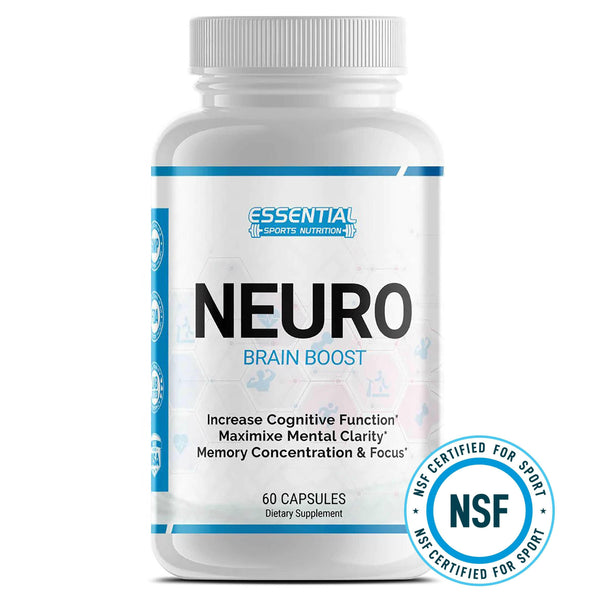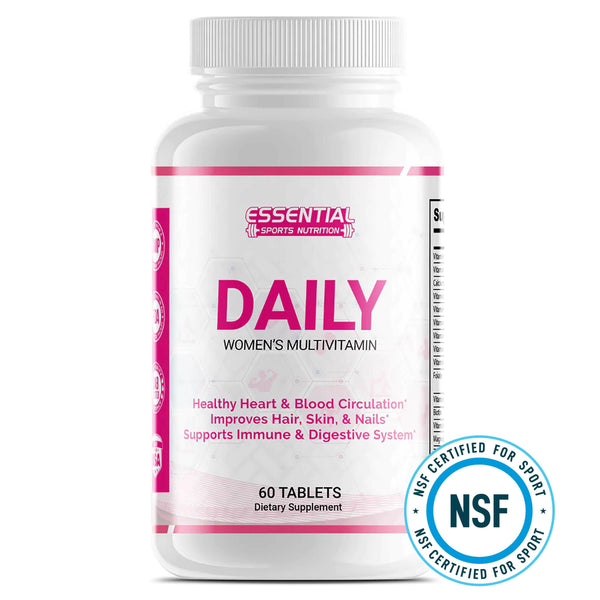The DASH Diet for Diabetes Management and Type 2 Diabetes Prevention
Managing diabetes can feel like a constant battle. From monitoring blood sugar levels to keeping track of medications, it's a condition that demands attention and care. One aspect of diabetes management that plays a critical role but is often challenging to navigate is diet.
The food choices one makes can significantly affect blood sugar control, weight maintenance, and overall well-being.

Enter the DASH diet - an eating plan originally developed to lower blood pressure but has shown promising benefits in managing diabetes. Research suggests that the DASH diet improves insulin resistance and may help control blood sugar levels.
Explore how adopting the DASH diet can be a game-changer for individuals striving to manage their diabetes effectively. By focusing on whole grains, fruits, vegetables, lean proteins, and low-fat dairy products while reducing sodium intake, this dietary approach offers a practical roadmap towards better health.
Key Takeaways
- The DASH Diet helps manage diabetes by focusing on nutrient - rich foods like fruits, vegetables, and whole grains which support healthy blood sugar levels.
- Reducing sodium intake and choosing low - fat dairy products as part of the DASH Diet can lower risks associated with heart disease and improve overall health.
- Studies show that following the DASH Diet aids in weight loss and reduces obesity rates among individuals with diabetes, leading to better diabetes management.
- The diet is effective not only for people with diabetes but also for those with prediabetes or gestational diabetes, offering a way to control blood glucose and prevent complications.
- Incorporating healthier food choices such as lean proteins, less salt, and more whole grains into your daily meals aligns with the DASH guidelines for improving insulin resistance and managing blood sugar levels effectively.
Understanding the DASH Diet for Healthy Eating
The DASH diet, which stands for Dietary Approaches to Stop Hypertension, is a well-researched plan focusing on foods high in potassium, calcium, and magnesium. It emphasizes eating plenty of vegetables, fruits, and whole grains.
This diet also recommends including nuts, beans, lean meats like fish and poultry, and low-fat dairy products while limiting salt intake. Originally developed to combat high blood pressure, it has gained popularity for its health benefits beyond just lowering blood pressure.
Research shows that the DASH diet not only helps in reducing hypertension but also plays a significant role in managing type 2 diabetes mellitus and promoting heart health. By cutting down on foods rich in saturated fats such as red meat and full-fat dairy products and avoiding added sugars and processed foods, individuals can improve their insulin sensitivity and maintain healthier blood glucose levels.
Studies have highlighted its effectiveness in improving metabolic syndrome conditions among youth at risk for cardiovascular diseases. Adopting this healthy eating pattern leads to better weight control and reduced risk of developing chronic illnesses associated with poor dietary habits.
The DASH Diet and Diabetes: An Overview

Dietary Approaches to Stop Hypertension, more commonly known as the DASH diet, has emerged as a formidable strategy in the management and prevention of diabetes. This regimen focuses on reducing sodium intake while increasing consumption of nutrients such as potassium, calcium, and magnesium which are crucial for lowering blood pressure.
For individuals with diabetes or at risk of developing it, adherence to the DASH diet contributes to significant improvements in insulin resistance and hyperlipidemia. Overweight and obesity issues also see substantial benefits from this dietary pattern.
Research underscores the effectiveness of the DASH diet in enhancing glycemic control among those battling diabetes. By prioritizing fruits, vegetables, whole grains, lean proteins, and low-fat dairy products, this eating plan directly addresses poor dietary habits that exacerbate risks associated with diabetes.
Individuals following the DASH guidelines experience notable decreases in blood glucose levels and triglycerides. Moreover, this approach aids in reducing LDL-C (low-density lipoprotein cholesterol) and improving insulin sensitivity.
As such,, making these lifestyle adjustments can lead not only to better management of current diabetic conditions but also to a decreased likelihood of encountering long-term complications linked with the disease.
How the DASH Diet Helps with Diabetes Management

The DASH diet plays a crucial role in diabetes management by focusing on nutrient-rich foods that improve insulin resistance and support healthy blood sugar levels. This eating plan emphasizes vegetables, fruits, whole grains, and lean proteins, which are all key components of a diabetes care routine.
Foods low in saturated fat and high in fiber from the DASH diet can help lower glucose responses after meals. This leads to better control over blood sugar spikes throughout the day.
Incorporating the DASH diet into daily life also aids in weight loss and reduces obesity rates among individuals with diabetes. Since excess weight is closely linked to increased insulin resistance, losing weight through a balanced diet can significantly enhance diabetes management.
Studies have shown that following the DASH guidelines not only improves blood pressure but also makes large positive changes in insulin requirements for people with diabetes. Therefore, adopting this eating pattern could be an effective strategy for managing both type 1 and type 2 diabetes while preventing complications related to heart disease as well.
DASH Diet and High Blood Pressure: A Connection
High blood pressure and type 2 diabetes often occur together, sharing risk factors like obesity and physical inactivity. The DASH diet directly addresses these issues by promoting a balanced intake of heart-healthy foods.
This eating plan is designed to prevent or manage high blood pressure. It emphasizes fruits, vegetables, whole grains, and lean proteins while reducing salt, added sugars, and fats.
Research shows that following the DASH diet can lead to significant improvements in blood pressure control. It lowers systolic and diastolic blood pressures significantly compared to typical Western diets high in saturated fats and processed foods.
The American Heart Association supports this approach because it effectively reduces hypertension risks which are common in people with diabetes.
Practical Considerations for Implementing DASH Eating

Implementing the DASH Diet requires thoughtful preparation and mindful eating. It involves selecting nutrient-rich foods while minimizing sodium intake to manage diabetes effectively.
Use less salt when cooking
Cutting down on salt is essential in the DASH diet. This approach strongly emphasizes consuming foods low in sodium to help manage blood pressure and diabetes more effectively. Since processed foods contribute 77% of dietary sodium, focusing on fresh ingredients can significantly reduce intake.
Cooking with less salt encourages the exploration of other herbs and spices, enhancing flavor without compromising health.
Opting for low-sodium alternatives or using smaller amounts of salt when preparing meals aligns with the DASH diet's recommendations. Combined efforts in reducing sodium consumption not only support blood pressure reduction but also aid in overall diabetes management, making every meal an opportunity to improve health.
Plan your plate
Planning your plate is a crucial step in adhering to the DASH diet, focusing on heart-healthy eating that can aid in diabetes management. Fill half of your plate with vegetables and fruits, as these are low in calories and rich in nutrients.
They help lower blood pressure levels and improve overall health. Include whole grains such as brown rice or whole wheat bread on one quarter of the plate to add fiber, which aids digestion and stabilizes blood sugar levels.
The remaining quarter should contain lean protein sources like fish, poultry, beans, or nuts recommended by the DASH diet. These proteins support muscle health without adding unhealthy fats to your diet.
Opt for fat-free or low-fat dairy products to complete your meal, providing calcium and protein while keeping total fat intake low. Following this simple guideline helps manage diabetes by promoting balanced eating patterns filled with nutritious foods.
Choose healthy proteins
Opt for meats that are rich in protein and magnesium, adhering to the DASH diet's guidelines. These meats not only provide essential nutrients but also play a significant role in diabetes management by contributing to muscle health and insulin sensitivity.
Lean cuts of beef, skinless poultry, and fish should be prioritized over processed meats to reduce intake of unhealthy fats.
Eggs, recognized as an excellent source of lean protein within the DASH diet framework, serve as versatile options for meal planning. Incorporating eggs into your diet supports muscle maintenance and repair without adding excessive calories or fat.
Low-fat dairy products such as milk, cheese, and yogurt further enrich the diet with high-quality protein while ensuring adequate calcium intake for bone health.
Switch to healthier grains
Switching to healthier grains plays a crucial role in the DASH diet, foregrounding the importance of whole grains over refined ones. Whole grains are not only an essential source of energy but also provide vital nutrients that help manage diabetes and improve overall health.
These grains include options like brown rice, quinoa, oats, and barley. They support healthy eating patterns by offering dietary fiber, which aids in controlling blood sugar levels and promotes a feeling of fullness.
Incorporate these whole grains into meals to enhance your diabetes diet effectively. This adjustment aligns with dietary recommendations advocating for the reduction of refined grains consumption.
Consuming whole grains contributes to better glycemic control and cardiovascular health, underpinning the DASH diet's foundation on promoting wellness through informed dietary choices.
Choose low-fat dairy products
Opting for low-fat or fat-free dairy products aligns with the DASH diet's approach to managing diabetes. This strategy helps in reducing the intake of saturated fats, which is beneficial for controlling high cholesterol and promoting better heart health.
The DASH eating plan specifically suggests these healthier dairy choices to support overall diabetes management.
Incorporating low-fat dairy into daily meals contributes to a balanced diet without compromising on calcium and protein needs. This adjustment can play a significant role in improving dietary quality while assisting in the regulation of blood sugar levels, vital for individuals with diabetes or prediabetes.
Through this method, one actively partakes in a lifestyle that mitigates risks associated with cardiovascular events and hyperglycemia.
The DASH Diet in Gestational Diabetes and Diabetes Prevention

The DASH diet plays a crucial role in managing gestational diabetes, contributing to better blood glucose control and weight management during pregnancy. This eating plan encourages consuming plant-based foods, lean proteins, and low-fat dairy products while limiting salt intake.
Studies have shown that following the DASH diet may help expectant mothers maintain a healthy gestational weight gain, potentially improving pregnancy outcomes.
For those looking to prevent diabetes, the DASH diet offers significant benefits as well. Its focus on whole grains, fruits, vegetables, and healthy fats supports stable blood sugar levels and can reduce the risk of developing type 2 diabetes.
Evidence suggests that women who adhere to the principles of the DASH diet are less likely to develop diabetic nephropathy, highlighting its preventive advantages against complications associated with diabetes.
DASH Diet for Prediabetes: An Effective Eating Plan

Prediabetes management benefits significantly from adopting the DASH diet. This eating plan has shown notable effectiveness in reversing prediabetes conditions. It features heart-healthy foods that are low in saturated fat, cholesterol, and sodium while being rich in minerals needed to combat high blood pressure and manage blood sugar levels.
Adhering to this diet involves increasing intake of fruits, vegetables, whole grains, and lean proteins. Studies associate it with a 20% reduction in the risk of developing type 2 diabetes.
Implementing the DASH diet as part of a prediabetes management strategy also promotes weight loss and enhances overall health by encouraging dietary choices that reduce the intake of fats and oils while favoring plant-based diets over meat substitutes.
Individuals are advised to consult with a registered dietitian for personalized guidance on how best to incorporate these nutritional guidelines into their daily routines for optimal results.
Conclusion
The DASH Diet has shown significant benefits in managing diabetes and improving insulin resistance. It recommends foods low in saturated fat, promoting heart health and blood sugar control.
Simple changes like reducing salt and choosing whole grains can make a big difference. Have you thought about how these adjustments can fit into your lifestyle? This diet not only helps those with diabetes but also supports overall well-being.
The DASH diet is a great opportunity to embrace these healthy habits for a stronger, healthier future.
Diabetes and the DASH Diet FAQs
Q: What is the DASH diet?
A: The DASH diet, which stands for Dietary Approaches to Stop Hypertension, is a type of eating pattern that emphasizes the consumption of fruits, vegetables, whole grains, lean proteins, and low-fat dairy products.
Q: How does the DASH diet benefit individuals with diabetes?
A: The DASH diet has been shown to help manage blood sugar levels in individuals with diabetes as it promotes healthy eating habits and can aid in weight management.
Q: What is the connection between diabetes and the DASH diet?
A: The DASH diet has been found to be beneficial for individuals with diabetes as it aligns with the principles of healthy eating recommended for managing the condition.
Q: Is the DASH diet recommended by medical associations for patients with diabetes?
A: Yes, the American Diabetes Association and the National Institutes of Health recommend the DASH diet as part of the dietary patterns beneficial for individuals with diabetes.
Q: How does the DASH diet affect insulin levels in individuals with diabetes?
A: The DASH eating pattern encourages balanced meals that can help regulate insulin levels, which is important for patients with diabetes.
Q: Can children and adults with diabetes follow the DASH diet?
A: Yes, the DASH diet can be followed by both children with type 1 diabetes and adults with type 2 diabetes to promote healthy eating and better blood sugar management.
Q: What are the key components of the traditional DASH diet?
A: The traditional DASH diet includes consuming a variety of food groups such as fruits, vegetables, whole grains, lean proteins, and low-fat dairy products in recommended amounts.
Q: Can following a DASH diet impact type 1 diabetes?
A: Yes, for people with type 1 diabetes, the DASH diet helps manage blood sugar levels by emphasizing low glycemic index foods that reduce sudden spikes in glucose.
Q: How do dietary fats from sources like avocados fit into the DASH diet for diabetics?
A: Healthy fats from sources like avocados are an essential part of the DASH diet because they provide energy without worsening glycemic response, supporting overall diabetes management.
Q: Does exercise enhance the effect of the DASH diet in managing diabetes?
A: Exercise complements the benefits of the DASH diet by improving insulin sensitivity and helping maintain stable blood sugar levels alongside a balanced diabetic-friendly eating plan.
Q: Are there other diets similar to DASH that also support diabetes management?
A: Similar diets that emphasize heart health and diabetic control include the Mediterranean Diet and Ornish Diet; both focus on reducing dietary fat intake while increasing consumption of fruits, vegetables, and whole grains.




























